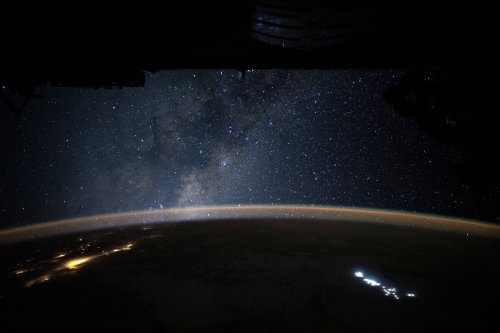Your gateway to endless inspiration
Space Backgrounds - Blog Posts

Up for some virtual cloud watching? ☁️
What do you see in Jupiter's hazy atmosphere?
Our NASA JunoCam mission captured this look at the planet’s thunderous northern region during the spacecraft’s close approach to the planet on Feb. 17, 2020.
Some notable features in this view are the long, thin bands that run through the center of the image from top to bottom. Juno has observed these long streaks since its first close pass by Jupiter in 2016.
Image Credits: Image data: NASA / JPL / SwRI / MSSS Image Processing: Citizen Scientist Eichstädt
Make sure to follow us on Tumblr for your regular dose of space: http://nasa.tumblr.com.

The trickster “Blinking Planetary”
Planetary nebula NGC 6826 is located about 4,200 light years from Earth in Cygnus. When observers look directly at it through a small telescope, they typically see only the nebula’s sparkling-white central star. However, by averting one’s gaze, glancing away from the central star, the nebula’s bulbous dust clouds come into view. This optical trickery earned this planetary nebula the name the "Blinking Planetary.”
Over the next several thousand years, the nebula will gradually disperse into space, and then the central star will slowly cool as it radiates its energy for billions of years as a white dwarf.
Make sure to follow us on Tumblr for your regular dose of space: http://nasa.tumblr.com

“We saw to the edge of all there is—
So brutal and alive it seemed to comprehend us back.”
-Tracy K. Smith, US Poet Laureate
Some pictures are worth a thousand words and some a thousand thoughts. On Jan. 31, astronaut Christina Koch shared this emotional view and quote from the International Space Station. Enjoy.
Make sure to follow us on Tumblr for your regular dose of space: http://nasa.tumblr.com